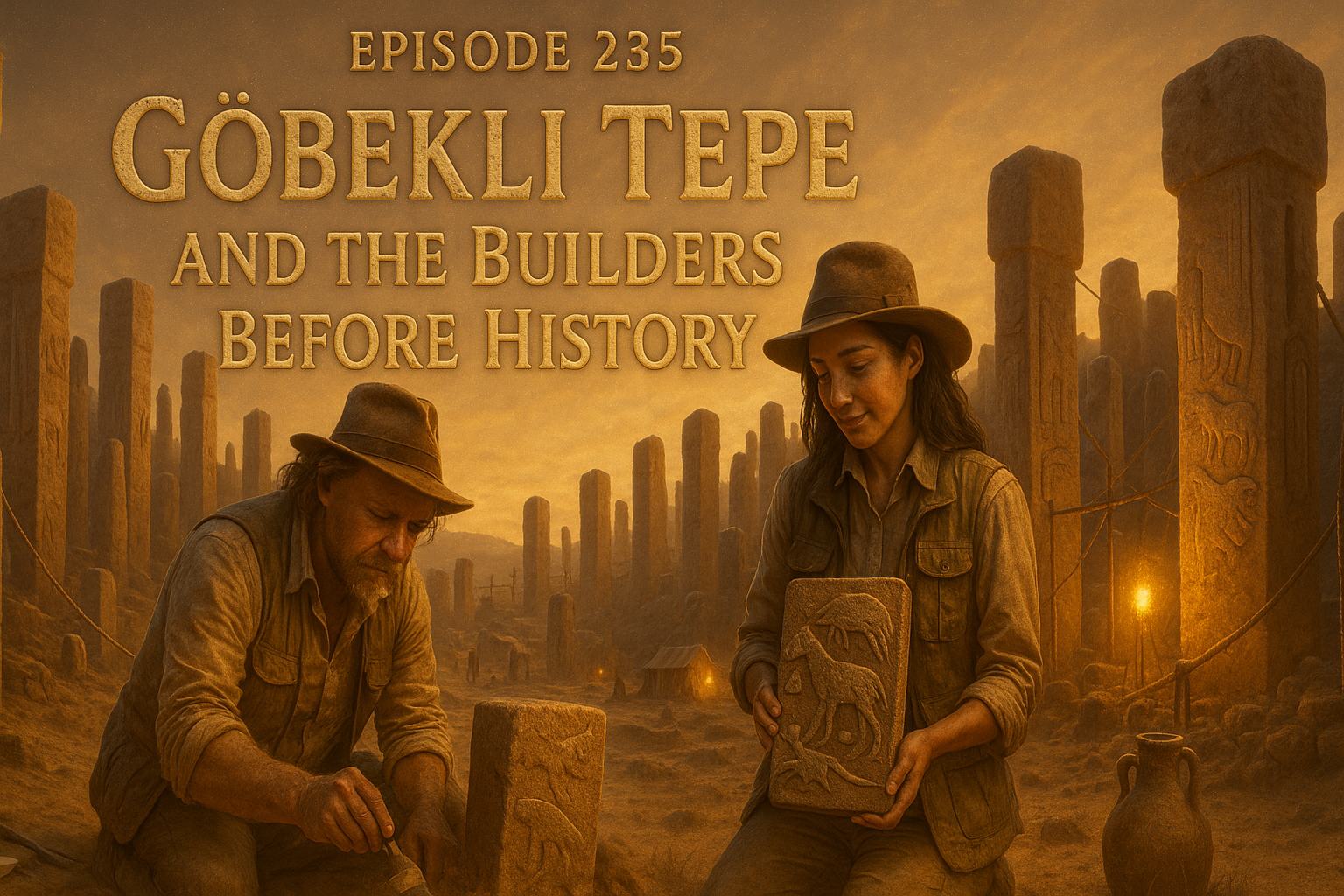Göbekli Tepe: The 12,000-Year-Old Temple That Rewrote History

🏺 The Hill That Shouldn’t Exist
Twelve thousand years ago, something walked the arid plains of southeastern Turkey carrying knowledge we still can’t fully grasp. They quarried bedrock, hauled fifty-ton stones miles across empty grassland, and raised rings of T-shaped pillars under a sky that still remembered the Ice Age. Then, when the work was done, they buried it all—every circle, every carving—under thousands of tons of earth.
For ten millennia the secret slept beneath a humble hill locals called Göbekli Tepe, “Potbelly Hill.” Until one curious archaeologist kicked the dirt and changed everything. 🏺✨
🕍 A Cathedral Before Civilization
Mainstream history used to teach a tidy progression: hunter-gatherers → agriculture → villages → religion → monuments. Göbekli Tepe laughs at that timeline. Here stood monumental architecture six thousand years before the first pyramid, seven thousand years before Stonehenge. No metal tools. No wheels. No domesticated animals. Just stone picks, human muscle, and a vision so powerful that scattered tribes traveled hundreds of miles to help build it. 🪶🛠️
🐍 The Stones Speak in Symbols
Walk among the pillars today and the carvings feel alive. A fox leaps with impossible grace. A scorpion raises its tail toward a headless man. Vultures circle like silent sentinels. Some see zodiac precursors. Others see shamanic visions frozen in limestone. And then there’s Pillar 43—the infamous Vulture Stone—where researchers believe a swarm of comet fragments is depicted raining down around 10,800 B.C., matching the exact date of the Younger Dryas impact that flash-froze the world and ended the age of megafauna. ☄️🦊
🕳️ Why Bury a Masterpiece?
Around 8,000 B.C., the builders didn’t abandon Göbekli Tepe. They ended it. Enclosure by enclosure, they shoveled rubble and soil until the circles vanished. Was it reverence? A ritual closing of sacred space? Or fear that the knowledge carved into those stones was too dangerous to leave exposed? Whatever the reason, the act feels less like goodbye and more like hiding. 🪦🔒
🧠 The Skeptical Corner (Yes, We Have One)
Even Klaus Schmidt, the site’s chief excavator, insisted the builders were local pre-agricultural people—no Atlanteans, no aliens, no ancient astronauts required. Enough determined humans with levers and ropes could move big stones. Astronomical alignments might be coincidence. The comet theory, while compelling, relies on interpreting abstract symbols. Yet even the most rational explanation leaves a chill: complex religion and symbolic thought didn’t emerge from settled life. Settled life emerged from complex religion. Something pulled these people together across vast distances to build a skyscraper of the soul before they ever built a house. 🧩🌠
🕳️ What Lies Beneath Your Own Backyard?
Only 5% of Göbekli Tepe has been excavated. Ground-penetrating radar shows at least 15 more enclosures still sleeping under the hill. And similar T-shaped pillars have been found at sites up to 30 miles away. How many more “ordinary” hills around the world are hiding older secrets? 🌍🔎
If Episode 235 left you staring suspiciously at every mound of earth, you’re not alone. The past isn’t nearly as dead as we thought—and sometimes it’s only a shovel blade away. 🕯️
🌒 Stay strange,
Juniper Ravenwood
Producer, The Shadow Frequency
shadowfrequencypodcast.com
📘 Facebook: Shadow Frequency Podcast
📺 YouTube: @shadowfrequencypodcast
🎧 TikTok: shadowfrequencypodcast























